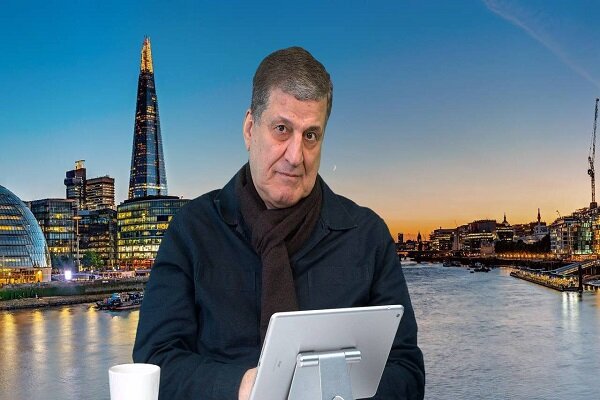Rome negotiations; Iranian diplomacy shines among American divisions

Mehr News Agency, International Group : “Najah Mohammed Ali” Iraqi political analyst and activist, a dedicated note entitled “Rome negotiations; Iranian diplomacy shines among American divisions »to the International Group Mehr News Agency which follows:
Eyes to Rome, the capital of Italy, sewn; Where it is preparing to host a new round of negotiations between Iran and the United States, with the mediation of Oman’s monarchy. Among the complexities of the international scene, Iran appears as a prominent party that has a diplomatic and coherent view, a view that is supported by internal unity and extensive external activity. In contrast, the US government is facing domestic divisions that disrupt its ability to take a single position. These dynamics have made Rome negotiations a decisive point, not only for the nuclear case, but also to show how active Iranian diplomacy can provide a model for global challenges.
Iran enters the negotiations with the confidence that originates from its wise leadership and internal cohesion. Contrary to the narratives trying to portray the Islamic Republic as a shaky system, it has been decided to participate in these dialogues through institutional consensus, a decision that reflects advisory mechanisms and places the unity of the Islamic system as a strategic priority. This cohesion is clearly seen in the performance of the Iranian negotiating team, which, under the leadership of the Foreign Minister, Abbas Arakchi, as a senior representative of the Islamic Republic, is fully coordinated and has the confidence of government agencies. This unity is not merely a tool for negotiation, but rather a clear view that is focused on protecting national interests, regardless of the results of the conversations.
In contrast, the US government suffers from internal divisions that weaken its position. Within the government of President Trump, there are two views: one led by Vance Vice President, who calls for a diplomatic approach with a priority dialogue, and the other supported by Mike Waltz’s National Security Adviser and Foreign Minister Marco Rubio, who takes a strict and hard -working approach. This internal conflict immerses US strategy and makes it difficult to predict Washington’s negotiations or the extent of Washington’s commitment to practical solutions.
But what distinguishes Iran’s position is not only internal cohesion, but also a significant diplomatic resolution that goes beyond the nuclear case. Iran is pursuing multifunctional diplomacy that aims to strengthen the regional and international presence. Iranian officials hold intensive meetings with their counterparts from countries such as Russia and China, as well as active regional countries such as Türkiye and Qatar to establish economic and political relations. For example, the Iranian Foreign Minister’s repeated trips to Asian and European capitals are aimed at strengthening cooperation in the fields of energy and commerce, which increases Iran’s ability to tackle sanctions. Also, Iran’s active participation in regional organizations, such as the Shanghai Cooperation Organization, shows that Iran is not isolated, but an active international acting. This diplomatic activity gives Iran strategic flexibility because it allows it to diversify its political and economic options and reduce the impact of American pressures.
In the context of the negotiations, it is clear that Iran has taken a realistic approach to managing expectations. The statements of the leader of the Islamic Revolution, Ayatollah Seyyed Ali Khamenei, emphasize the avoidance of optimism or skepticism, and calls for negotiations to be considered part of the daily diplomatic activity. To achieve this goal, Iran is trying to reduce the media’s confusion about the talks through controlling the flow of news to prevent them from becoming an exceptional event that occupies public opinion, especially within Iran. This approach shows awareness of the importance of focusing on content rather than form, especially when media campaigns are trying to distort the goals of the negotiations.
self-talks are a complex process that requires time and patience. Iran realizes that the achievement of immediate progress is unrealistic, especially with the continuation of external tensions and pressures. Therefore, it emphasizes that the United States must abandon the language of threat and sanctions and recognize Iran’s right to use peaceful nuclear energy under the framework of the prohibition of nuclear weapons. At the same time, Iran focuses on the protection and stability of its nuclear cycle as a strategic priority, rather than involved in discussions on enrichment levels that are often used as leverage.
Injection of negotiations, as Tehran emphasizes, must focus on two goals: fully lifting illegal sanctions for the benefit of the Iranian people by Washington, and to build trust in the peaceful nuclear program by Tehran. But these goals face obstacles, including the impact of parties such as the Zionist regime that strive to prevent any progress, as well as internal divisions in the US government. Reports such as the Axius website highlights the challenge and refers to the tension between Venus’s diplomatic stream and the strict stream of Rubio and Waltz.
Ultimately, Iranian diplomacy is highlighted as a model of activity and flexibility in the face of challenges. Through internal cohesion, extensive external activity, and the realistic management of the negotiations, Iran provides an image of a country that is confident in its abilities. In contrast, the United States faces internal challenges that may limit its effectiveness. The success of the Rome negotiations depends on the ability of the parties to overcome pressures and divisions and commitment on solutions that respect Iranian rights and help regional stability. In Rome, negotiations will not be merely a dialogue between the two countries, but rather a test for diplomacy in building bridges in the world that is becoming more and more complicated.


